Some of the links in this post may be affiliate links.
The more Peperomia plants I grow, the more I love them, and I’ve really come to love Peperomia puteolata! You will also see it named as Peperomia tetragona and even Peperomia fosteri. Commonly named the Parallel Peperomia, it is an easy care, trailing species from Colombia.
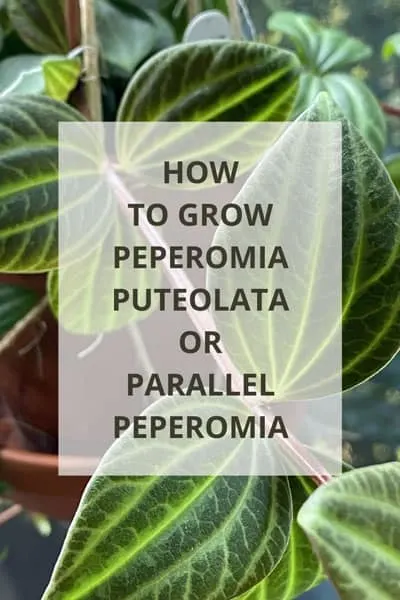
Table of Contents
Peperomia Puteolata Care
This fast growing Peperomia starts off growing upright, and then starts to trail over the edge of the pot. It is ideal as a hanging plant, or left to cascade on the edge of your plant stand.
LIGHT
I keep my own plant under T5 fluorescent grow lights in front of a North Facing window and it is thriving. As far as natural light goes, it will do just fine in front of a good sized window but be careful of giving it too much direct sunlight.
A little bit of direct sunlight is fine, but avoid any mid-day sun or sun all day. Eastern and Western windows will work well, or even a Northern window. The growth will be a little weaker in less light, but your plant will still grow nicely!
Don’t overdo it with the direct sunlight though. Two to three hours of morning sun or late afternoon sun would be beneficial.
TEMPERATURE
Being a tropical plant, these plants like warmer temperatures. Avoid cold drafts and aim to keep temperatures between 65-80F (18-27C).
Minimize any exposure to cooler temperatures and never allow temperatures to drop under 50F (10C) for any amount of time.
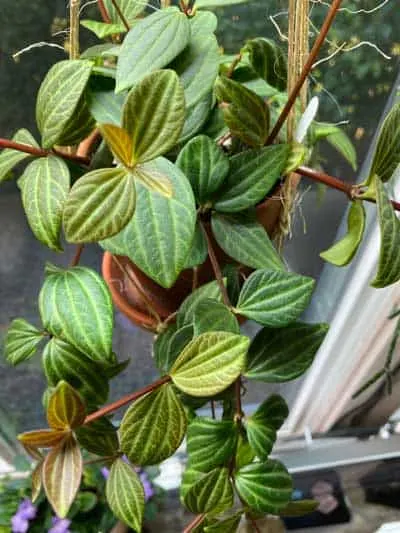
WATER
Peperomia puteolata is semi-succulent in nature and as far as watering goes, you can treat it just like you would a succulent.
I allow mine to dry out completely, and then I give it a good soaking. It’s pretty low maintenance and quite drought tolerant!
Do not let it stay completely dry for too long though, otherwise your leaves will start to curl, and then the lower leaves will yellow and fall off.
FERTILIZING
Fertilize your Parallel Peperomia throughout the growing season. I use Dyna-Gro Grow for most of my houseplants.
This is a premium fertilizer that I use on most of my houseplants and I’ve achieved great results and growth! It contains all the micro and macro nutrients that plants need for growth and I’ve noticed a wonderful difference in my houseplants.
Refrain from fertilizing during the winter when growth slows or stops.
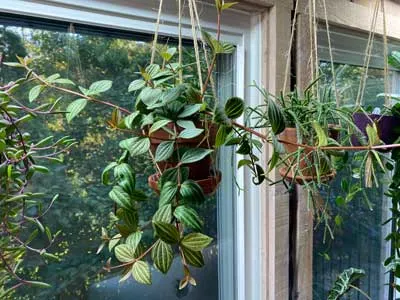
SOIL
Since these plants are semi-succulent in nature, I treat these just like succulents when it comes to soil moisture and potting mix.
For Peperomias, I like to blend 2 parts of a good succulent soil with 1 part of 1/4″ pumice. This results in a soil blend that is extremely well drained, and it allows my Peperomia to dry out quickly in between waterings.
POT
I received my plant in a small nursery pot, probably 3.5″, and I repotted it into a slightly larger terra cotta pot with the soil mixture described above.
I’m a fan of using terra cotta pots for any plants that are semi-succulent or succulent. If you are planting in brand new terra cotta pots, I like to condition them before using.
To learn how I do this, be sure to read my blog post on pros and cons of terra cotta for some helpful tips and tricks!
These plants don’t have huge root systems, so keep the pots on the smaller side! As a general rule of thumb, only go up one pot size if your plant needs a larger pot.
ALWAYS have a drainage hole, regardless what kind of pot you choose for your Parallel Peperomia.
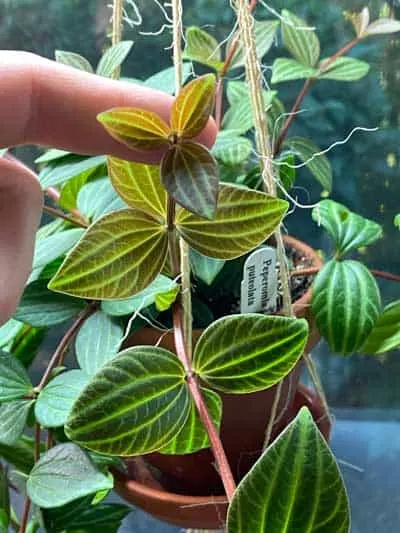
PROPAGATION
Peperomia puteolata propagates easily. You may choose to propagate your plant if you want to control it’s size or if you want to create a bushier plant.
If your plant has gotten leggy, you can trim the stems back and use the tip cuttings to propagate new plants with.
Since these plants are semi-succulent, it would be a good idea to allow your cutting to air dry for a day or so. This will help to prevent rotting of the cuttings.
Rooting will occur at the nodes (where the leaves meet the stems). In fact, you can even see the beginnings of the roots right on the plant itself even before you take the cuttings.
Take a look at a photo of my plant below. Notice where the roots are starting to grow in the circled areas.
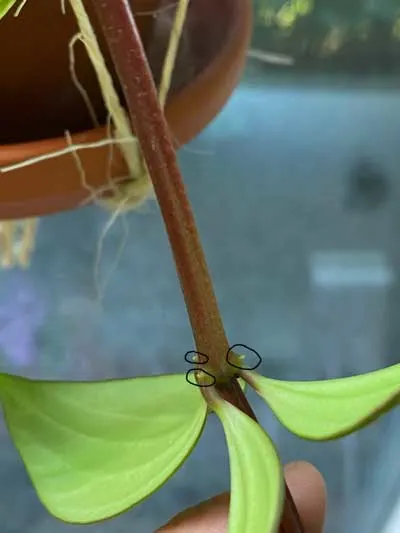
You can easily take tip cuttings, but be sure to leave a couple leaves at the end of the cutting, and you need to include one node area as well because this is where rooting will occur.
You may choose to remove the leaves where the node is (the part that you will bury in the soil) but make sure you leave a couple leaves at the tip of each cutting.
You can place the cuttings in water to root if you’d like but it can be a little tricky since the leaves and stems are pretty small and awkward to handle.
The best thing to do is to place your cuttings, several if you can, into a pot that has a mixture of soil and perlite (50/50 mix works well for rooting). Keep the soil moist to encourage rooting.
Select a warm area with bright, indirect light to encourage rooting. Rooting will occur much more quickly in warmer areas so aim for at least 68F.
Try and keep humidity high as this will be beneficial to rooting as well. Check out my guide to humidity, or you can also place a clear plastic bag over the pot.
PLANT TOXICITY
Peperomia puteolata is not toxic to cats or dogs.
COMMON QUESTIONS
Why does my plant have red leaves?
The newer leaves are reddish or more bronze in color, and this is normal! As the leaves age, they will turn greener. There is nothing wrong with your plant!
Why are my leaves curling?
Check your soil moisture. Is your soil bone dry? Your plant will develop curling leaves if your soil stays bone dry for a long time.
What are the skinny white growths on my plant?
Those are the flowers. They are typical nondescript Peperomia flowers. And we don’t grow these plants for the flowers. We care about the foliage! You can safely cut off the flowers if you don’t care for them.
These spikes are technically called an inflorescence. Here is a photo of my own plant that is blooming.
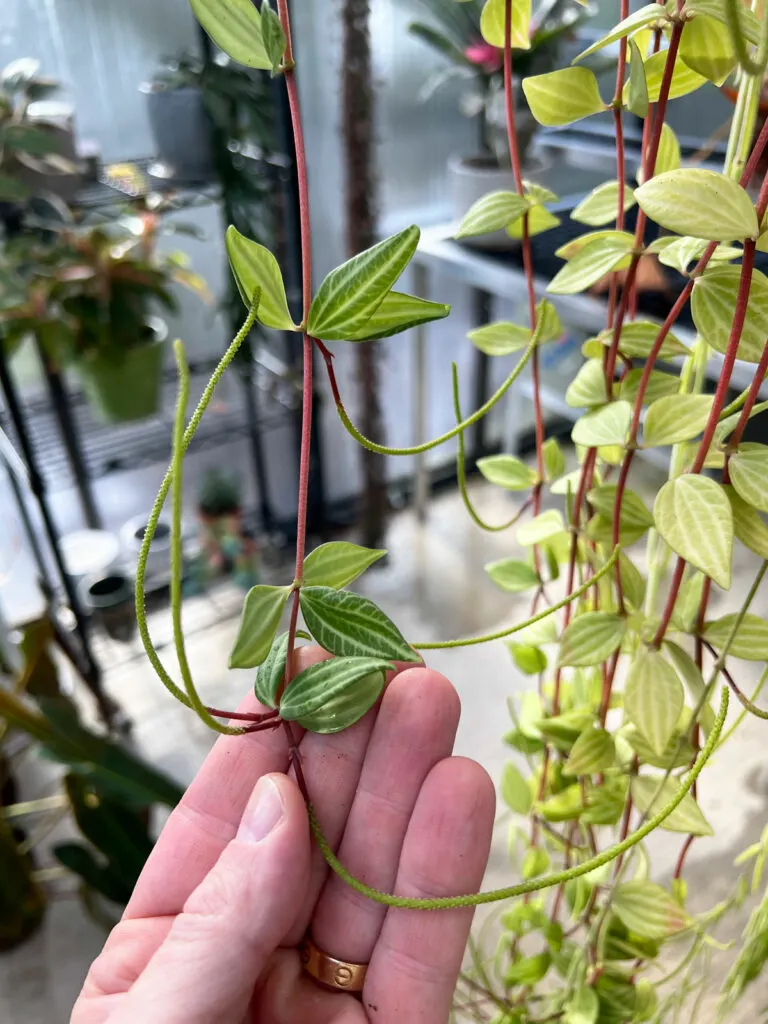
Why is my plant dropping leaves?
Feel your soil. Is it too wet? If your soil has stayed too wet for too long, your plant will likely drop some leaves.
Think about what would be causing your soil to remain too wet. Do you not have enough light? Is your soil not well drained? Do you not have a drainage hole? Is your pot too big? There are all factors to consider.
Why is my plant not growing?
The most common reason is not enough light. Is your plant right in front of a window? If it’s not, and you’re disappointed in your plant’s growth, move it right in front of a window. Northern or Eastern exposure windows are ideal. Just avoid too much direct sun.
Also, be sure to fertilize during the growing season.
OTHER PEPEROMIAS
Interested in growing other Peperomia species? Be sure not to miss my other Peperomia blog posts:
Peperomia polybotrya (Raindrop Peperomia)

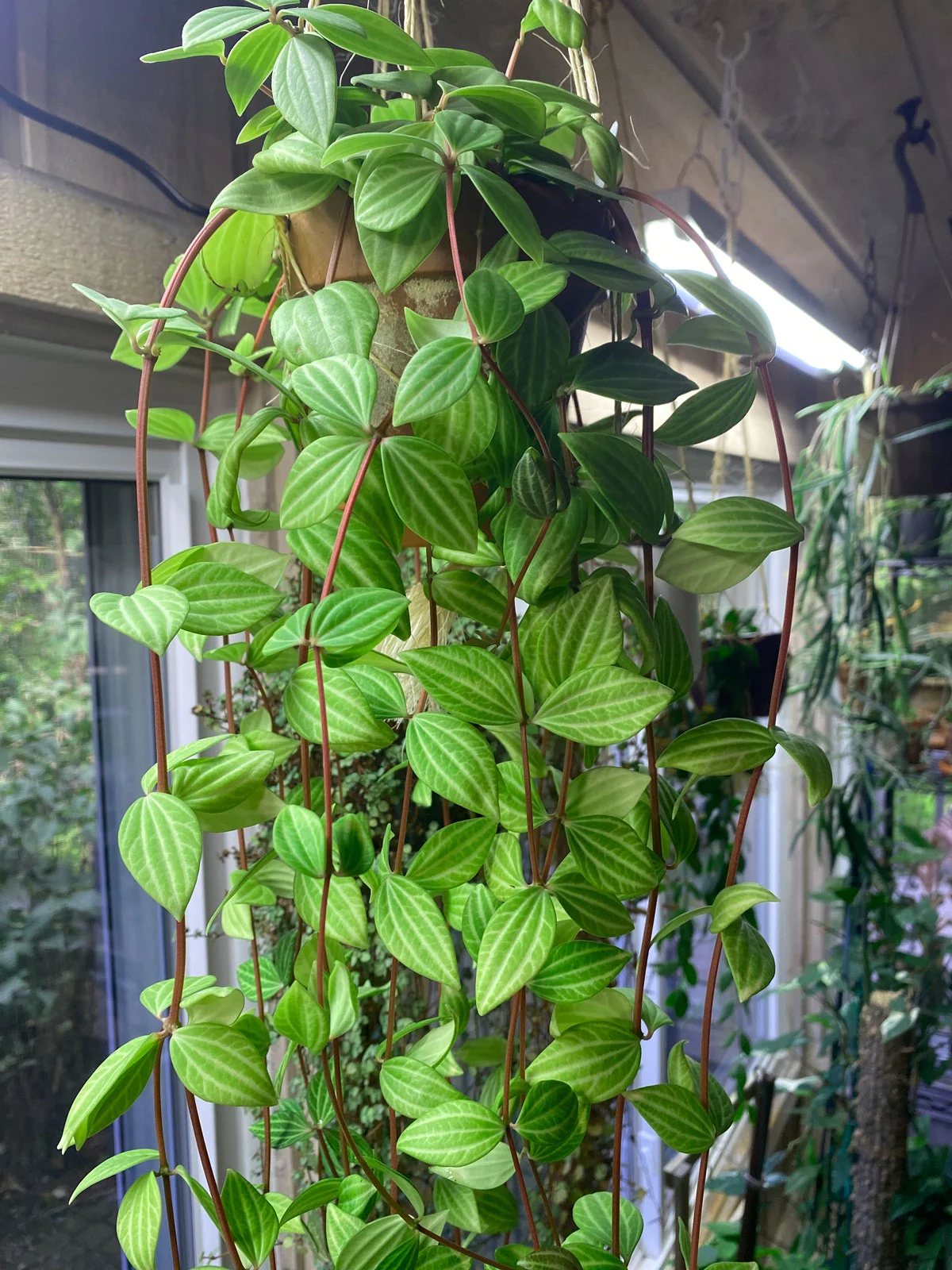
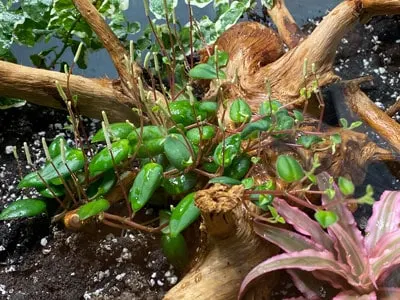
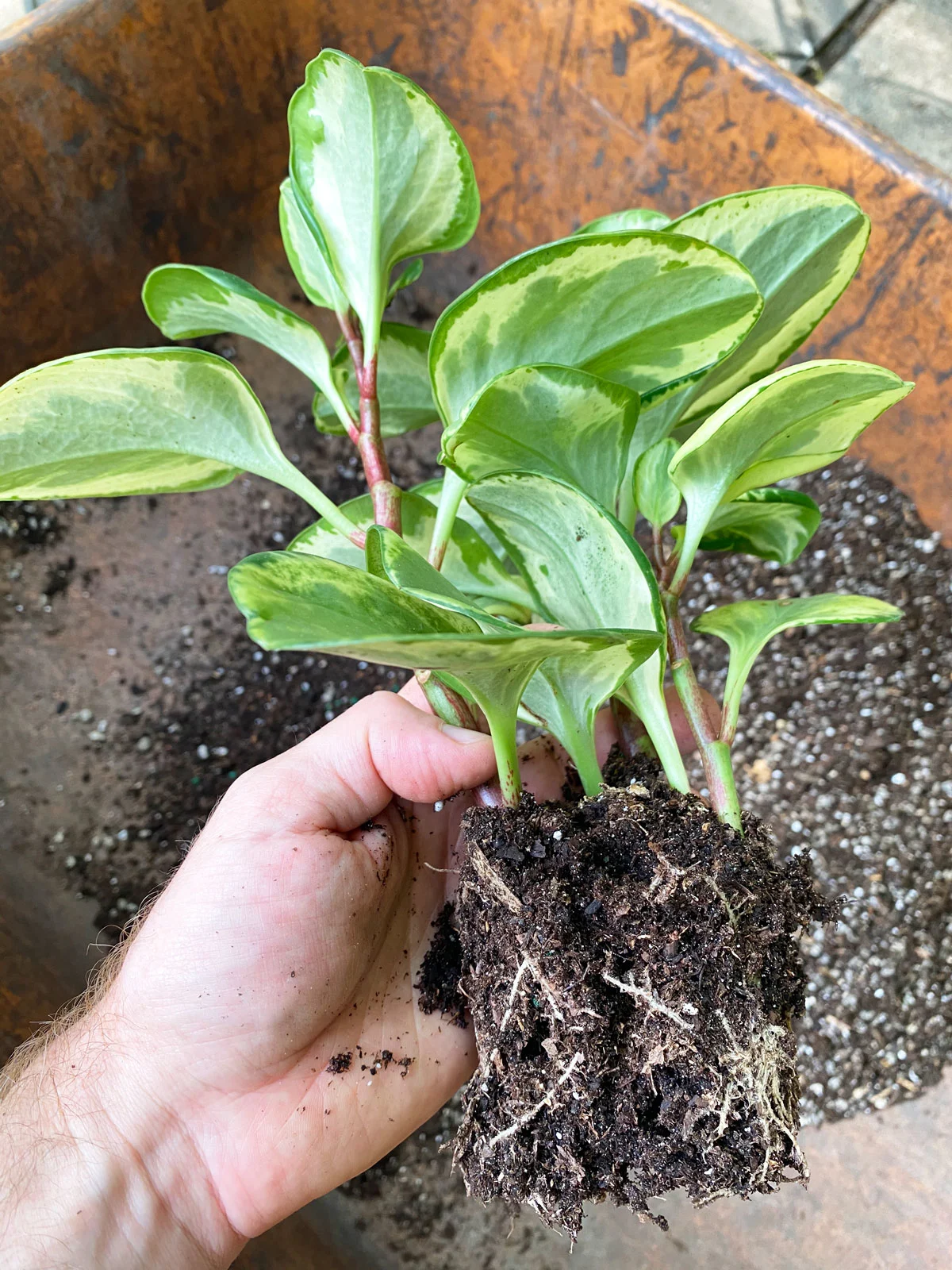
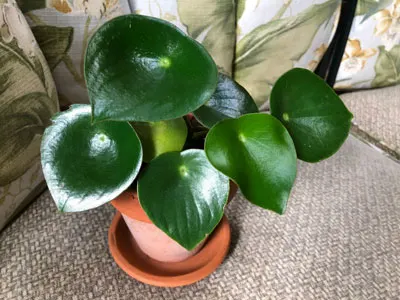
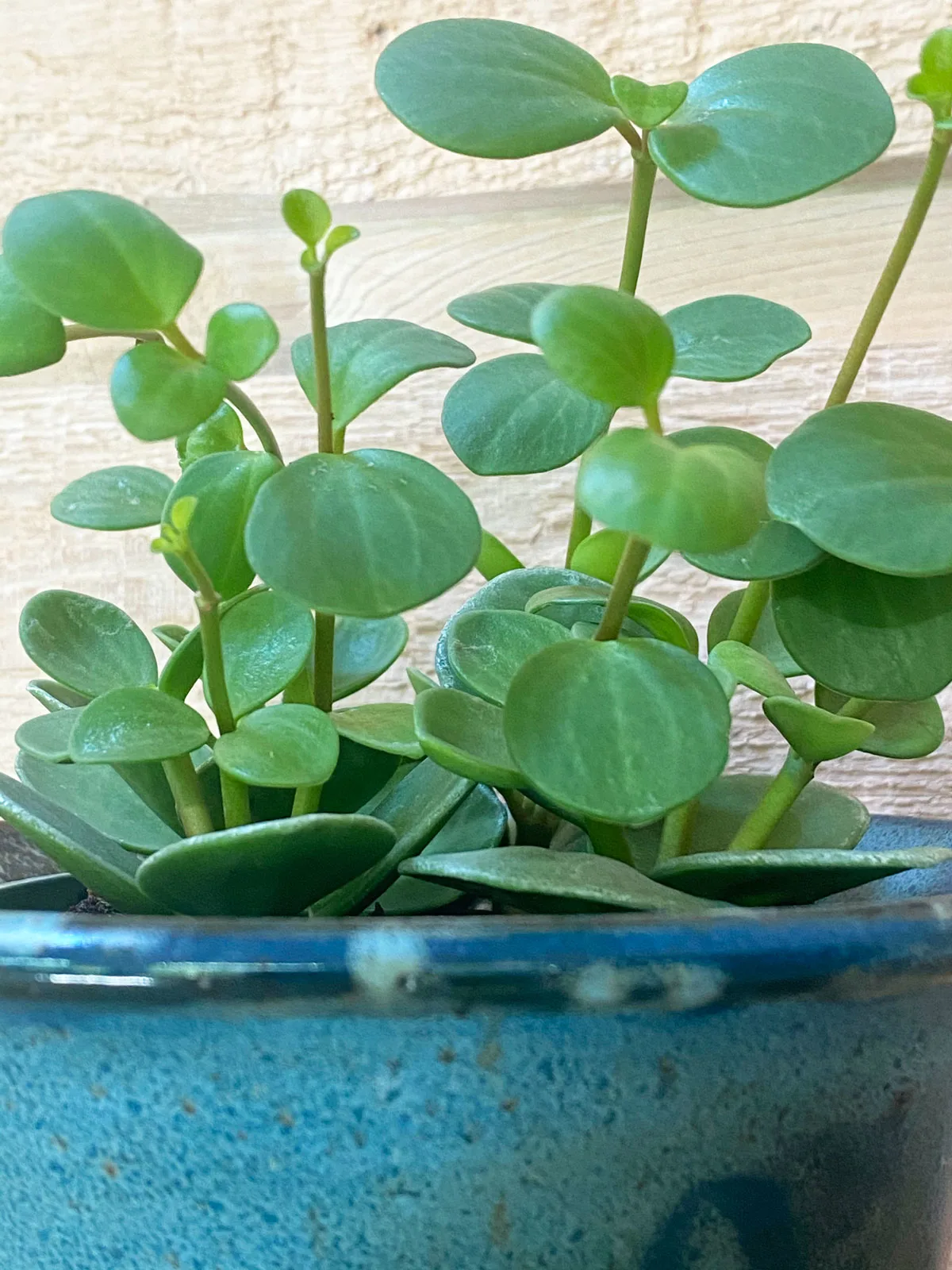
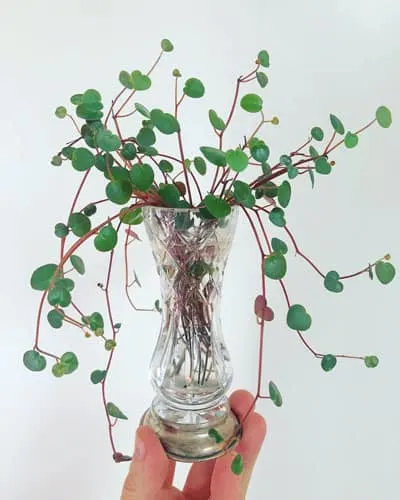
Jamie
Sunday 12th of December 2021
Thank you so much for all your great info! You’ve helped me immensely with many of my plants. I’ve been wanting a parallel peperomia for some time now. Is it better to purchase a new plant a certain time of year? I would buy this one online from Etsy and have it shipped to me, but was wondering if it’s better to wait until Spring or Summer rather than Winter?
Raffaele
Sunday 12th of December 2021
Hi Jamie! I'm glad you've found my site helpful! As far as ordering goes, depending on where you live and where the seller is shipping from, I'd just be concerned with cold temperatures during transit. I'd keep that in mind. If you do order during cold weather, you can always ask the seller if they can ship with a heat pack. Hope this helps!